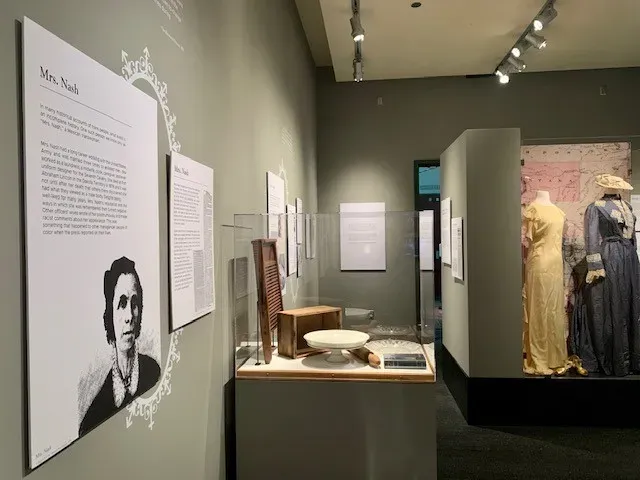While Pride Month is a great time to celebrate, it is also an opportunity for reflection and education. That is why the Washington State History Museum in Tacoma opened its exhibit, Crossing Boundaries: Portraits of a Transgender West, about Transgender people living in the West from the 1660s to the 1940s, on May 29, the eve of Pride Month.
The exhibit was created in collaboration with Dr. Peter Boag, an author, historian, and educator at Washington State University in Vancouver. It highlights people who moved west to change the way they dressed and behaved in order to live a life more authentic to who they really were. The life stories of these pioneers illuminate the themes of the exhibit –identity, visibility, acceptance, and history – that remain central to the LGBTQ+ community today.
Through a collection of historic artifacts and newspaper clippings, the exhibit tells the story of how the difficult journey west provided these individuals and others with chances for fulfillment and self-expression.
Gwen Whiting, lead exhibitions curator at the museum said, "One of the things that appealed to me about this project is that LGBTQ+ folks have been a part of our history forever." She believes that their history has been underrepresented in museums, which served as a motivator for her to "lay a base for this work."
Recovering lost histories
The history of Transgender pioneers in the West is "an incomplete one, marked by sensational popular accounts and prejudice, and a lack of personal records," according to a WSHM press release.
This exhibit seeks to put names and faces with these pioneers, such as Harry Allen, who was known as a "heartbreaker" and was wanted by the law; Mrs. Nash, laundress to the Seventh Calvary and an officer's wife; and Dr. Alan Hart, a Northwest novelist and medical doctor who requested that his personal documents and correspondence be burned after his death. As with any of these Manifest Destiny stories, life out West was full of tales of bravery, moments of fear and legends of triumph.
It was hard for Whiting to come to realization that many of the stories of people who transitioned in the West were largely lost, either intentionally by family members or communities, or because pioneers often left few personal accounts and belongings behind. "It's hard to think about how many more people's stories we weren't able to find," she said. "One of the things I learned very quickly was that this project would be emotionally difficult."
Because written documentation is rare, some assume that Transgender people did not exist before the modern era. As this exhibit shows, that just isn't true. In fact, Transgender people have existed in the West for thousands of years. Many Native cultures have a history of recognizing three, four, or more genders.
"The everyday life is important to history"
Whiting said the reception of the exhibit has been excellent, with one of the main groups being parents bringing a child who identifies as Transgender. She said that the exhibit has served as a talking point for families. "These conversations have been happening in our gallery – and that's really exciting."
"It is an honor to be a part of the visionary inclusiveness of the Washington State Historical Society, bringing to attention varied peoples marginalized in and by our history," said Boag in a press release. He believes that the exhibit shares stories that are important to the state and region but were once mostly ignored and in some cases, purposely misconstrued. "As such, what we share is not only affirming of the lives of the people we explore but also of fundamental interest to everyone," he added.
While the exhibit opened on the cusp of Pride Month, it will be on view until December 12, 2021, at the Washington State History Museum.
Whiting hopes that teachers will bring their students to view it. She also hopes that through this research and exhibit, the museum will be able to build its collection as time goes on.
Whiting has also found that many people believe that their life isn't important. "I find that most people who are living now don't seem themselves as part of history," she said. But, as she added, "You are more important than you realize. You don't have to be the president or a celebrity – the everyday life is really important to history."
And without the "everyday life" of Transgender pioneers in the West, exhibits like this wouldn't exist.
For more information on "Crossing Boundaries: Portraits of a Transgender West," go to washingtonhistory.org.
Exhibit hours: 10:00 a.m.–5:00 p.m. Tues.-Sun. (On the third Thursday of each month, it's open 10:00 a.m.-8:00 p.m., with free admission from 3:00 to 8:00 p.m.)
Admission: Free for members. Adults: $14. Seniors (age 65+), students (age 6-17), and military (with ID): $11. Free for children 5 and under. Family rate: $40 (up to two adults and four children under age 18). Patrons with a Washington Quest card and licensed Washington Foster Parents can attend for $1 per person or $2 per family.


